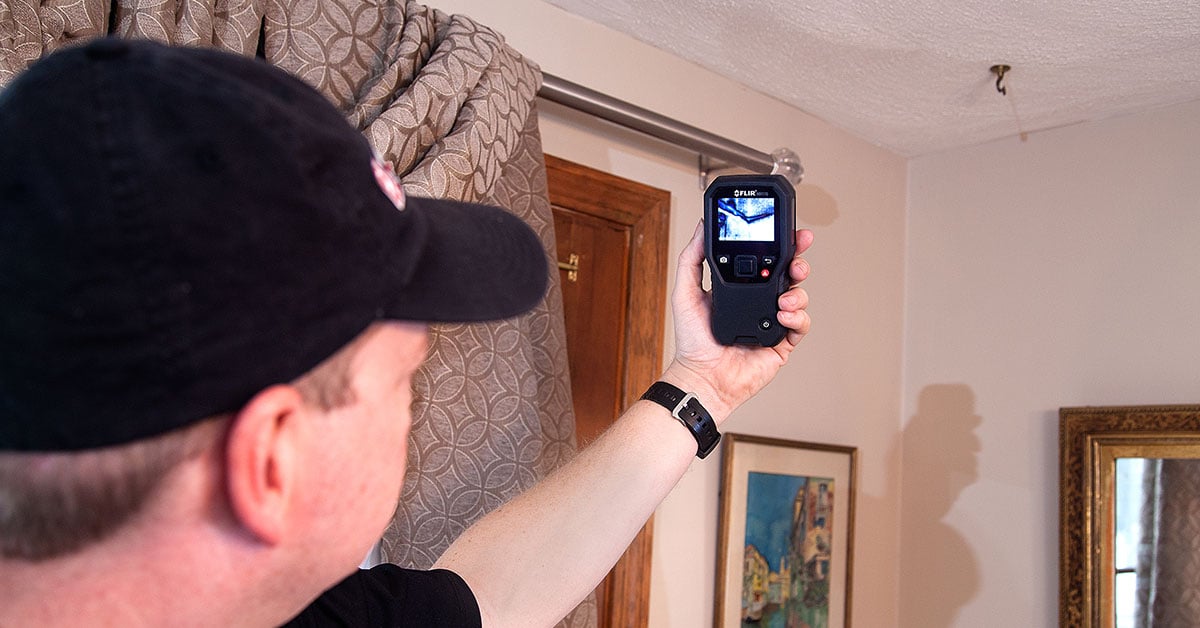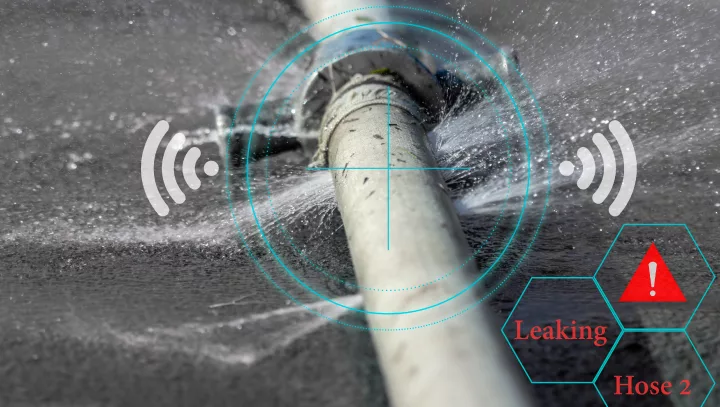Advanced Water Leak Detection Solutions for Your Home and Business
Advanced Water Leak Detection Solutions for Your Home and Business
Blog Article
Ingenious Solutions for Very Early Discovery of Water Leaks in Buildings and Infrastructure
From cutting-edge leakage detection technologies to the deployment of IoT sensing units for real-time tracking, the landscape of leakage prevention is developing quickly. Automated water circulation evaluation systems are improving just how leakages are recognized and addressed, leading the means for a proactive approach to water leakage detection.
Advanced Leakage Discovery Technologies
Advanced leakage discovery innovations, furnished with advanced sensors and algorithms, play a crucial function in promptly determining and determining water leakages in various setups. Electromagnetic sensing units can identify changes in electro-magnetic fields created by water, providing yet an additional layer of leak discovery capability.

IoT Sensors for Real-Time Surveillance
In the realm of modern water leakage detection, the combination of IoT sensing units for real-time monitoring represents a crucial innovation in enhancing positive leakage discovery abilities. These sensing units supply continuous monitoring of water systems, supplying real-time information on water circulation prices, stress variations, and temperature adjustments. By leveraging IoT technology, these sensors can find also the tiniest anomalies in water usage patterns, allowing early identification of prospective leakages prior to they intensify right into major problems.
IoT sensing units transfer data to a centralized platform, where sophisticated algorithms evaluate the details and create signals or notifications when abnormalities are spotted. This real-time monitoring capability allows homeowner or facility managers to without delay resolve leakages, lessening water damage, decreasing repair expenses, and saving water resources.
Additionally, IoT sensors can be incorporated with structure management systems, enabling computerized feedbacks to identified leakages, such as turning off water valves or turning on pumps to alleviate the impact of leakages. Generally, the execution of IoT sensors for real-time monitoring significantly boosts the effectiveness and effectiveness of water leakage detection in buildings and framework.
Artificial Intelligence Algorithms for Leak Forecast

One trick benefit of utilizing machine learning for leak prediction is its capability to continually find out and boost its precision with time. As more information is accumulated and fed into the algorithm, it can improve its forecasts and adapt to transforming conditions, ultimately raising the integrity of leak discovery systems.
Furthermore, artificial intelligence algorithms can assist in identifying refined indications of leakages that may go undetected by standard monitoring approaches. water leak detection. By analyzing complicated data collections in real-time, these algorithms can supply early cautions and alerts, enabling for prompt intervention and preventative upkeep to alleviate possible water damage and connected expenses
Making Use Of Thermal Imaging for Leakage Detection
Thermal imaging modern technology uses an encouraging method for detecting water leakages in various systems and frameworks. By utilizing infrared radiation and temperature level differences, thermal imaging video cameras can recognize hidden leaks that are Learn More Here not quickly noticeable to the nude eye. When water escapes from pipes or structures, it usually changes the temperature of the bordering location, developing temperature differentials that thermal cams can record. These temperature level irregularities are then equated right into noticeable photos, highlighting the exact location of the leakage.
One of the essential advantages of thermal imaging for leakage detection is its non-intrusive nature. Overall, the usage of thermal imaging innovation enhances the performance and accuracy of water leak discovery, making it a beneficial tool for keeping the integrity of structures and facilities.
Automated Water Circulation Evaluation Solutions
Exactly how can computerized water circulation evaluation systems reinvent the detection and monitoring of leakages in numerous systems and facilities? Automated water flow analysis systems supply a proactive strategy to leak discovery by constantly keeping track of water circulation rates and patterns. By developing baseline data, these systems can quickly determine variances that might suggest a leakage, enabling timely treatment to avoid navigate here extensive damages.
These systems make use of sophisticated formulas to analyze real-time data and give immediate informs when abnormalities are found, enabling speedy action to be taken. Additionally, automatic water circulation evaluation systems can be integrated with building monitoring systems or IoT platforms, enhancing general performance and enabling remote tracking abilities.
Furthermore, the data accumulated by these systems can be made use of for anticipating maintenance purposes, helping to recognize possible powerlessness in the framework before leaks occur. Overall, the implementation of automated water circulation evaluation systems can significantly improve leak discovery and monitoring techniques, eventually causing cost savings, reduced water waste, and boosted sustainability in buildings and infrastructure.

Conclusion
To conclude, the combination of sophisticated leakage discovery technologies, IoT sensors, artificial intelligence formulas, thermal imaging, and automatic water circulation evaluation systems uses cutting-edge options for very early detection of water leakages in structures and infrastructure. These technologies allow real-time tracking, prediction of leaks, and efficient detection methods to stop water damages and waste. Carrying out these options can assist in preserving the integrity and sustainability of water systems visit here in various setups.
Report this page